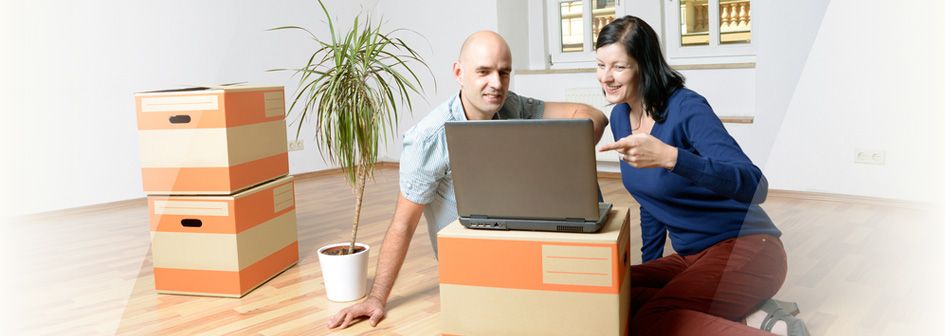Secure Your Sofa's Future: Professional Storage Advice
Posted on 21/05/2025
Secure Your Sofa's Future: Professional Storage Advice
Your sofa is more than just furniture--it's a cornerstone of comfort in your home and often a significant investment. Whether you're moving, downsizing, renovating, or simply need extra space, storing your sofa properly is crucial to keep it looking great for years. In this guide, we'll provide expert, professional storage advice for sofas to protect your beloved furniture and ensure it's ready for use whenever you need it.

Why Proper Sofa Storage Matters
Sofas are often made of delicate materials--whether it's plush fabric, supple leather, or intricate woodwork. When not stored correctly, your couch can suffer from:
- Mold and mildew growth due to trapped moisture
- Fabric fading or discoloration from improper covering or sun exposure
- Frame warping from poor handling or unsuitable storage environments
- Pest infestations damaging the upholstery and structure
- Unpleasant odors caused by dust and poor airflow
Safeguarding your sofa's future involves more than just sticking it in a corner of your garage. Here's how you can protect your sofa with the best storage solutions.
Assessing and Preparing Your Sofa for Storage
Step 1: Thorough Cleaning
A clean sofa is less likely to attract pests or develop mold. Professional storage advice begins with an in-depth cleaning:
- Vacuum all surfaces, including crevices, to remove dust and debris.
- Use fabric-safe upholstery cleaner for any stains. Spot treat as necessary.
- If you have a leather sofa, apply appropriate leather conditioner after cleaning to maintain the material's flexibility.
- Make sure the sofa is completely dry before moving to storage.
Step 2: Disassemble If Possible
Professional movers and storage experts recommend disassembling sofas when possible. This makes transport easier and reduces the risk of damage:
- Remove legs, arms, or cushions if they detach easily.
- Keep screws, bolts, and small hardware in clearly labeled bags taped to the sofa frame.
- Wrap each piece separately for additional protection and easier handling.
Step 3: Protect With Covers
Never store your sofa uncovered. Over time, dust, dirt, and even small rodents can find their way into exposed furniture. Use these tips for best results:
- Use breathable sofa covers or couch storage bags--avoid using plastic wrap directly on delicate materials as it can trap moisture.
- Old sheets or cotton fabric works well for leather sofas, preventing both moisture buildup and scratches.
- If using plastic, ensure it's loosely fitted and only for short-term storage.
Choosing the Right Storage Facility
The location you choose plays a huge role in securing your sofa's future. Professional sofa storage experts recommend considering the following:
Climate-Controlled vs. Standard Storage
- Climate-controlled storage units maintain steady temperature and humidity, which prevents mold, mildew, warping, and fabric breakdown. This is highly recommended for leather, antique, or high-value sofas.
- Standard storage units may be cheaper, but extreme temperatures or dampness can cause permanent damage.
Choose a climate-controlled solution whenever possible for long-term sofa protection.
Evaluate Storage Security
- Look for facilities with gated access, video surveillance, onsite staff, and solid locks to reduce risk of theft or vandalism.
- Check facility reviews and ask about insurance options for additional peace of mind.
Measure Access and Space
- Ensure your planned storage unit has easy access and is large enough to accommodate the sofa without cramming or stacking.
- Measure your sofa's dimensions before renting the unit to guarantee a perfect fit.
- Avoid storing the sofa upright or on uneven ground--this can cause the frame to warp or stresses the upholstery.
Transporting Your Sofa Safely
Best Practices for Safe Transportation
Moving your sofa to storage doesn't have to be a headache. Here's how to do it while minimizing risk:
- Use a furniture dolly and ask for help to maneuver heavy pieces safely.
- Cover all corners and edges with bubble wrap or moving blankets to guard against nicks and dings.
- During transport, secure the sofa with straps to avoid movement.
- Do not stack heavy items on top of the sofa at any point--it can crush the cushions and frame.
Consider hiring professional movers if the sofa is exceptionally large, valuable, or delicate.
Storing Your Sofa: The Dos and Don'ts
How to Store Your Couch for Maximum Longevity
- Store your sofa flat: Placing it on its feet preserves the natural shape and structural integrity.
- Elevate from the floor: Put wooden pallets, blocks, or furniture sliders under the feet to increase airflow and prevent moisture damage. This is one of the best couch storage solutions for avoiding mold and rodents.
- Leave space around the sofa: Avoid packing other items too closely--this allows air circulation and reduces risk of crushing.
- Avoid plastic wrap for long-term: Trapped humidity causes mold and odor, so opt for breathable materials instead.
- Check regularly: Visit your storage unit periodically to check for any visible issues and make adjustments as needed.
What Not to Do When Storing a Sofa
- Don't use chemicals or mothballs directly on the sofa: They can stain fabrics and leave lingering odors.
- Don't store in damp, unventilated areas: Basements and garages can promote mold growth and frame rusting.
- Don't ignore warning signs: If you notice mildew smells, dampness, or pests, address them immediately to prevent lasting damage.
Special Considerations for Different Sofa Types
Leather Sofas
- Condition the leather thoroughly before storage to prevent drying and cracking.
- Avoid direct sunlight--even through windows--as this can fade and age leather rapidly.
- Maintain steady humidity: extremes can cause the material to expand or shrink, and climate-controlled storage is essential.
Fabric Sofas
- Make sure all fabric is completely dry before wrapping--trapped moisture is the main cause of mold and mildew.
- Use fabric-safe cleaning products and avoid harsh chemicals or bleach.
- Use breathable covers to avoid trapping moisture.
Modular or Sectional Sofas
- Label each piece and take photos before disassembling for easier reassembly.
- Wrap each module separately to prevent scratches and fabric snags during transport and storage.
Professional Storage Hints for Long-Term Success
Prepare for Extended Storage Durations
- Apply an extra layer of protection for periods over 6 months by using scented, pest-repellent sachets (never in direct contact with the sofa).
- Check with your storage provider about regular unit inspections or maintenance opportunities.
- Rotate cushions periodically to prevent flattening or compression spots.
Document Your Sofa's Condition
Take detailed photos of the sofa before covering and storing. This is useful for both insurance and personal records. If damage does occur during storage or transport, you'll have evidence for claims or repairs.
Don't Forget the Insurance
Even with the best storage advice for sofas, accidents and unforeseen events can happen. Ask your storage facility about insurance options that specifically cover furniture and upholstery.
Common Mistakes When Storing Sofas (And How to Avoid Them)
- Rushing the Clean-Up: No matter how pressed for time you are, skipping a deep cleaning risks stains setting permanently or pests being drawn to crumbs and debris.
- Ignoring Temperature Fluctuations: Unregulated storage units can cause dramatic swings in temperature and humidity, which is especially dangerous for antique or leather sofas.
- Poor Packing Techniques: Too-tight wrappings or airtight plastic bags can cause sweat and rot. Always prioritize airflow and breathability.
- Improper Handling: Lifting from the arms or dragging a couch can warp frames and damage joints. Always use appropriate lifting methods.
- Neglecting Regular Checks: Months can go by quickly--set reminders to inspect your stored furniture a few times a year for early detection of issues.
Expert-Recommended Furniture Storage Supplies
- Breathable covers or canvas for lasting protection without trapping moisture
- Packing tape for securing covers gently without contact on the sofa itself
- Bubble wrap or moving blankets for cushioning hard edges and vulnerable corners
- Wooden pallets to elevate the sofa and boost airflow
- Furniture sliders or felt pads for easier placement in the unit
- Labelled plastic bags for keeping screws and detachable parts organized
- Desiccant packs or moisture absorbers (placed nearby, not on fabric) for extra protection in humid climates

Preparing Your Sofa for Its Next Chapter
After storage, a little prep will bring your sofa back to its prime:
- Let the sofa air out after removing covers to dissipate any stored odors.
- Inspect for dust and gently vacuum, especially under and between cushions.
- If needed, spot-clean or wipe down with appropriate cleaners.
- Reassemble carefully, referencing your labeled photos and hardware bags.
- Polish wood or leather, and fluff cushions before settling your sofa into its new space.
Conclusion: Ensure a Healthy Future for Your Sofa
Securing your sofa's future is all about knowledge and preparation. By following professional storage advice, you can preserve your couch's comfort, beauty, and value through any transition. Whether your sofa is a family heirloom or a modern centerpiece, investing time and care in its storage now means years of enjoyment to come. For optimal results, consider working with trusted storage providers and don't hesitate to ask for tailored sofa storage tips for your unique needs. Your future self--and your sofa--will thank you!







.png)
.png)